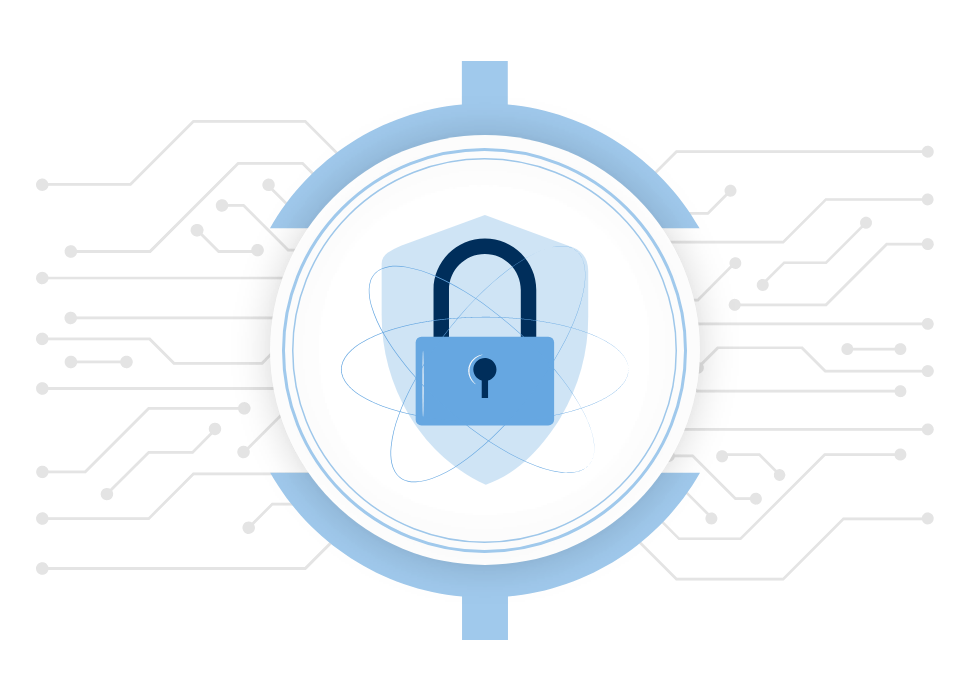Guide to Choose the Best GIS Software for Indian Enterprise Businesses
The integration of Geographic Information System (GIS) into the modern era is essential as it offers robust tools/technology for spatial analysis, data visualization, and decision-making. This technology plays pivotal role across diverse fields like urban planning, public health, environmental management, utility management, crime prevention strategies, and so on. It empowers organizations to efficiently allocate resources, identify optimal locations for infrastructure, and make informed decisions by recognizing patterns in geographic data. In this context, GIS establishes a strong framework for understanding and utilizing geographic patterns, nurturing enhanced results in planning, development, and resource allocation. This, in turn, maximizes overall output by enabling effective management and monitoring of Enterprise processes.
Factors Navigating GIS Software Selection for Enterprise
In the rapidly evolving landscape of Geographic Information Systems (GIS), choosing the right software for your specific needs is a critical decision as it is used in multiple domain for multiple purposes. Different industries/verticals has its own kind of use cases to perform and purpose to serve. For instance, in agriculture, GIS facilitates precision farming by optimizing planting patterns and managing irrigation using spatial data on soil types and weather conditions. Conversely, in urban planning, GIS is vital for mapping land use and assessing transportation infrastructure, demanding software adept at handling data related to population density and environmental impact. The diversity of GIS applications call attention to the need for software precisely aligned with each industry’s demands, emphasizing the understanding of specific use cases. Some of the specific arguments vital to be kept in mind while opting for a solution must be:
1. Industry-Specific Needs
Different industries have unique requirements when it comes to GIS and Remote Sensing. It should always be ensured that the chosen software aligns with the specific needs and challenges of the industry, whether it’s agriculture, healthcare, urban planning, or environmental science, mining, traffic control, asset management and monitoring and so on.
2. Security and Compliance:

Assess the security features of the GIS software, especially for dealing with sensitive data. Ensure that the software complies with industry standards and regulations regarding data privacy and security like Database, Secure Socket Layer (SSL), Transport Layer Security (TLS) Protocols, Active Directory, and Lightweight Directory Access Protocol (LDAP), etc…
3. Data Support, Accuracy and Precision:
A reliable GIS and Image Processing software should support all the industry standard data, database, file format along accurate and precise spatial information about them. This leads to desired outputs to the users and gain the confidence in the solution for implementing that in the real world problem solving capabilities.
4. User-Friendly Interface:
The ease of use is a significant factor, especially if the GIS or Image Processing tools are really very easy to handle, even if the end user is not from the proper GIS and Remote sensing background. Additionally, if the end users or the client is from Geo-informatics background an easy and user friendly GUI provides an extra bit of advantage for performing different analysis and gain maximum output. Hence, a user-friendly interface enhances collaboration across different departments within the organization.
5. Cost-Effectiveness:
Assessing the overall cost of ownership, encompassing licensing fees, maintenance costs, and training expenses, is crucial in selecting the appropriate software for the enterprise. Once it is confirmed that the software aligns with parameters such as budget constraints and other aforementioned factors, the procurement process can proceed.
6. Scalability:
Scalability in the context of GIS software refers to the system’s ability to adapt and expand seamlessly in response to the increasing volume and complexity of spatial data. It’s essentially about ensuring that the GIS and Remote sensing software can handle the growing demands placed on it without a significant loss of performance or functionality.
A scalable GIS solution is like a flexible infrastructure that can grow alongside your organization’s needs. This adaptability is vital for long-term utilization because it mitigates the risk of outgrowing the GIS system. Without scalability, organizations might find themselves constrained by software limitations as data volume and complexity increase, leading to potential inefficiencies, bottlenecks, and the need for frequent system upgrades or replacements.
7. Customization facility:
The customization options in GIS software refer to the extent to which the system can be modified and adapted to meet the specific needs and workflows of an organization. This feature is crucial because every enterprise operates uniquely, with distinct processes, data requirements, and workflows. By opting for GIS software with a high degree of customization, organizations gain the flexibility to tailor the system to their precise specifications, ensuring seamless alignment with existing business processes. The ability to customize the GIS software extends beyond just data handling. It includes adapting the user interface to match the preferences and needs of different departments within an organization.
8. Integration Capability:
Integration capabilities in GIS software are crucial for seamless data inter-exchange with other enterprise systems, such as ERP or CRM platforms. This integration enhances operational efficiency and supports data-driven decision-making. Real-time data sharing between GIS and other systems ensures decision-makers have the latest information, offering efficiency in the overall process flow, especially for timely responses to any situation or emergencies. In essence, GIS integration transforms it into an integral part of the organizational infrastructure, fostering data synergy and streamlined operations.
9. Mobile Accessibility:
Mobile accessibility has emerged as an essential part to the contemporary GIS based work landscape, allowing on-the-fly access to GIS data. Software with robust mobile accessibility is empowering the field teams to collect and update data in real-time. This feature enhances efficiency, as field personnel can directly contribute to the GIS system, ensuring data accuracy and timeliness. Whether in urban planning, environmental monitoring, or infrastructure management, field survey mobile accessibility ensures seamless integration between fieldwork and GIS, optimizing decision-making processes. It’s a critical aspect in today’s fast-paced work environment, aligning GIS tools with the mobility needs of field teams for more effective and real-time data management.
10. Pre and Post-Sales Support:
Choosing the right GIS software involves assessing both technical features and the quality of pre and post-sales support. Comprehensive pre-sales support, including product demonstrations and responsive customer service, aids in informed decision-making. It helps users clarify doubts, address concerns, and ensure the chosen GIS software aligns with organizational needs. Equally critical is robust post-sales support, encompassing training programs and responsive customer service. This combination ensures effective GIS utilization, allowing users to leverage the software’s full potential and fostering a successful partnership between the provider and the organization for optimized outcomes.
IGiS – A Holistic GIS Solution Unveiling Technological Excellence in the Indian Context
While talking about the Indian Standard Scenario, Geospatial policies and its implementation strategies, it becomes very important to take account of solutions which can be the perfect fit for the Indian context. SGL or Scanpoint Geomatics Private Limited has come across with its indigenously/ in-house build one stop Geo-spatial solution known as IGiS or Integrated GIS and Image Processing Software which can be a perfect alternative of existing multi window solutions present in the market to solve all the GIS and Remote sensing based real world problem under a single umbrella. This Cutting-edge “Make in India” software is developed in collaboration with SAC and ISRO. Positioned as the preferred choice for Indian enterprises, IGiS stands out for numerous compelling reasons. Some of its key features are discussed below for the Indian Enterprises which are looking for smart, cutting-edge, up to-date geomatics solution.
- Comprehensive Integration: IGiS goes beyond ordinary GIS offerings by providing a single platform that seamlessly integrates GIS, Image Processing, LIS, and Mobile Applications. This all-in-one solution is designed to streamline your operations and enhance efficiency.
- Customization: The IGiS Developer Kit allows the users to focus on important productive custom software solutions. IDE, COM controls and extensive APIs in various programming languages empower developers to create custom objects, complex applications and complete vertical solutions. Additionally, its compliance with OGC standards and the provision of an SDK for developers further empowers your team to tailor the solution to your unique requirements.
- Cost-Effective Excellence: In a landscape where cost-effectiveness is paramount, IGiS takes the lead. Compared to foreign product lines, IGiS offers an economically viable solution without compromising on quality or functionality. It’s a smart investment that aligns with your budgetary considerations.
- Enduring Value: With IGiS, you not only invest in a powerful GIS solution but also in enduring value. The software comes with a perpetual license, ensuring that your investment continues to deliver value over the long term. Hence, no more worrying about license renewals or expiration.
- User-Friendly Versatility: Catering to users across all proficiency levels, IGiS boasts a user-friendly interface that accommodates beginners, intermediate, and advanced users. It’s a versatile and accessible GIS solution designed to meet the diverse needs of Indian enterprises.
Selecting the right GIS software is a pivotal step in leveraging the power of spatial data for the organization. By considering key features, scalability, and industry-specific needs, one can make an informed decision that aligns with organization goals. It should always be remembered that GIS is not just a tool; it’s an investment in the future competence and success of organization operations. Evaluating the option, goals, requirements with alignment of the organization perspective, involvement of stakeholders are the pivotal points to be taken care of while choosing the enterprise based solution for the organization.
Latest Blog

Smart Waste Management with GIS
1. Introduction: Waste management entails the responsible collection, processing, and disposal of waste materials with a focus on environmental preservation. Its core objectives include waste reduction, resource recovery, and the....
Read More